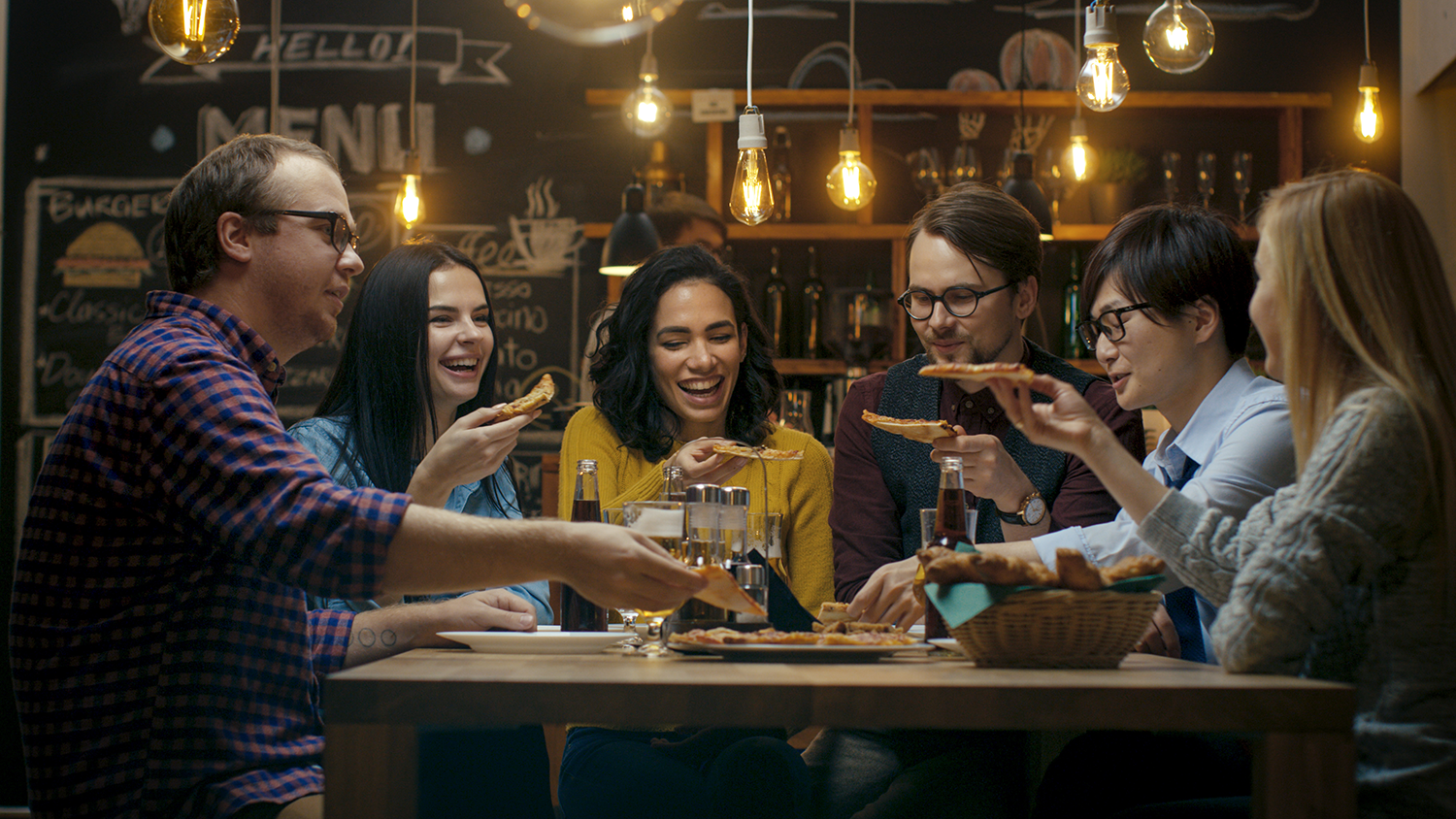Hunger doesn’t have a time limit—especially when alcohol is in the mix. Whether it’s your “marathon” evening guests, after-show crowds, or even other industry workers popping in after their own shifts, there is always an opportunity to pad your food sales long after the dinner rush has died down.
Keeping your kitchen open for late-night guests can be a gamble, however. Kitchen labor isn’t cheap, and as tempting as it may be to keep your salaried employees on the line, running your executive and sous chefs into the ground is a recipe for burnout and failure. If you want to keep the kitchen churning, you’re going to have to pay for it.
When properly planned, though, late-night menus can often be executed by a skeleton crew. If you do it right, you should be able to keep the kitchen open with one cook (two, at most) and one dishwasher. Offering your whole menu is setting yourself up for failure; you need to be able to pare it down to quick-prep, hot-selling items to avoid bogging down your limited staff.
Scaling for Your Restaurant’s Late-Night Menu
Obviously, you can scale to your restaurant’s needs, but for most average-sized establishments, a handful of options should be enough to satisfy those late cravings. Burgers, sandwiches, and fried foods should make up the bulk of the late-night menu. Items like these aren’t as susceptible to scaling problems as your big entrees and salads. The difference between making one cheeseburger and a dozen cheeseburgers is negligent when measured against making a dozen bowls of pasta or risotto, for example.
During late night operations, your cooks will likely be self-managing. There won’t be an expeditor directing traffic to rely on, so coordination between front and back of house is crucial. Your waitstaff will be doubling as their own runners; they’ll need to stay on top of their orders so they don’t die in the window.
Create a Memorable Late-Night Experience
Now, trimming your dinner menu down to a smattering of choices is the easiest, and probably most popular way to offer late-night dining to your guests, but it’s not the only way. Creating a unique experience and developing an atmosphere of adventure and innovation can make your restaurant a destination rather than just another stop.
Much in the way that many venues use brunch as an end-of-week food cost miracle elixir, with a bit of creativity, quick wit, and a lot of effort, you can say the same with late-night dining. Boston’s Eastern Standard Kitchen & Drinks has cemented itself as the city’s “king of the after dark” by doing just that. While the restaurant does feature a traditional menu for late-night, its buzzworthy appeal comes from its nightly specials.
Around 11:00 every night (midnight on weekends), a member of the front of house staff emerges from the kitchen with a list and a glass marker—the spectacle itself is part of the experience. They climb atop the back of the bar and transcribe that night’s special offerings on the restaurant’s giant mirrored wall large enough for every eye in the place to read. As a hub for the neighborhood’s chefs, bartenders and servers to gather after work, the restaurant always makes these options available for wallet-friendly prices.
These specials pull double duty, allowing the kitchen to repurpose items but also to experiment with new dishes in a beta-testing environment. Assessing your inventory towards the end of the dinner shift, seeing what you’ve over-prepped or undersold, and quickly composing a new dish is a great way to move product.
This approach can allow you to keep boosting your sales while getting valuable feedback from your guests about your new ideas in a low-risk environment. In most cases, guests who are out later are generally more willing to try new things since the drinks tend to lower aversions and inhibitions.
Get the Word Out
Of course, creating a new menu is no good if nobody knows about it. As always, your marketing should have a two-tiered approach. First, you’ll want to reach the guests already in your shop. Secondly, you’ll also need to bring in newcomers from outside.
Signage inside the restaurant -- whether via tabletop stands or digital tablets -- can inform your customers of the new service. You should concentrate your efforts at the bar area, as that’s likely where the bulk of your late-night diners will find themselves. Those barstools will stay occupied into the wee hours with the help of a greasy burger and fries. Offer your regulars discounts
As far as new guests go, reaching out to local nightlife bloggers can go a long way. They are usually on the hunt for new outings and late-night experiences to share with their readers. A focused social media campaign is also one of your best tools. Recapture the old wink & nod speakeasy mentality by putting a secret hashtag in your Instagram posts for a discount on your late-night specials. Find ways to encourage your guests to create some user-generated content for social to help promote your new menu.
You may even want to throw a party to celebrate your new nightlife endeavor. Music, games, discounts, and some prizes. No one’s going to be more excited about your business than you, so if you’re not willing to show your guests some excitement about your late-night menu, why should they?
By focusing on the execution and distribution of your late-night menu, you can reach a market segment you had been leaving untapped, boosting your sales and your appeal.





